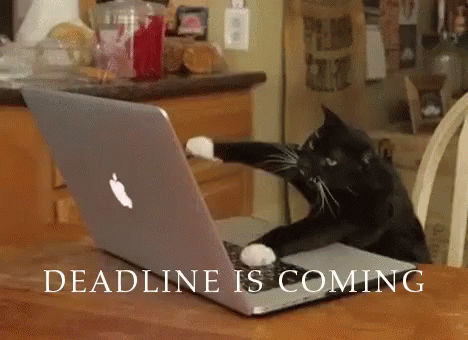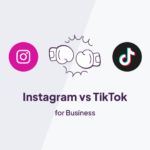As a marketing agency, having non-responsive clients can be a frustrating and challenging experience. When clients go dark, it can be tough to know how to handle the situation, especially when you depend on their input to move forward with a project.
In this article, you’ll learn seven effective strategies that you can use to handle unresponsive clients and ensure that your projects stay on track. As a bonus, we’ve also included an email template that you can send out to clients who suddenly become unresponsive.
What is a Non-Responsive Client?
A non-responsive client is one of the most challenging situations a marketing agency can face. It can be frustrating and stressful for both the agency and the client. A non-responsive client is someone who fails to reply to your emails or phone calls in a timely manner or not at all.
They may stop responding to you completely or offer delayed and minimal responses. This can be a frustrating experience for marketing agencies, as it can hinder progress and result in lost revenue. However, it’s essential to understand why clients go dark and how you can handle the situation effectively.
Why Do Clients Go Dark?
There are numerous reasons why clients may become unresponsive.
Clients may get busy and overwhelmed with other projects, leading to delays in responses. They may be unsatisfied with the progress, quality of work, or direction of work and are looking for an opportunity to exit the project.
Take a look at some of the reasons why clients become unresponsive:
- Lack of communication. As a marketing agency, it is crucial to establish clear communication channels with your clients from the very beginning of the project. This means setting expectations for how often you will communicate with them, what types of updates they can expect, and what the best methods of communication are for both parties.
- Lack of trust. Trust is a crucial component of any successful client-agency relationship, and it can take time to build. As a marketing agency, being transparent with your clients about your processes, timelines, and any challenges that arise during the project is essential. This will help to build trust and establish a strong working relationship.
- Poor engagement throughout the project. Most clients want to receive regular updates on progress and be involved in critical decisions. If you keep your clients informed and ask for their feedback or input, they’ll remain invested in the project and less likely to go dark.
7 Effective Strategies How to Handle Unresponsive Clients
1. Establish a Clear Communication Plan from the Start
99% of people argue that a business must communicate effectively with them as a customer. So, avoid unresponsive clients by agreeing on how you will communicate with each other from the start (ideally, when you onboard your client).
Ask your clients if they use any communication tools internally, such as Slack or Chanty, and request to join them. If they don’t have any communication tools in place, then make sure you also have their email and phone number in case they suddenly stop responding to your primary communication channel.
Establishing a backup communication plan at the beginning of a project is crucial in case clients go dark. Ask your clients the best way to move forward on a project if you don’t hear back from them.
For instance, is there someone else on the team you can contact? Or if you don’t receive a response after a certain number of days, can your team move forward without them?
You might not have the luxury of waiting around for responses with time-sensitive projects, so be sure to have at least one other point of contact in case your client gives you the silent treatment.
Setting expectations and having an agreed-upon action plan will help eliminate any issues before they arise.
2. Identify What Causes Unresponsiveness
Another strategy how to handle unresponsive clients is to Identify the stages of your project when they tend to disappear. If you rely on them for content approval and still use messy spreadsheets or email, consider improving your marketing workflows with approval automation tools like Gain.
Gain streamlines the marketing approval process by automatically moving content to the next person for review, revisions, or approval. The user-friendly interface allows approvers to approve or request changes with just one click. Gain also sends friendly reminders to clients when they owe you feedback or approval, eliminating the need to chase them.
3. Understand Your Clients’ Schedules
Getting a sense of what your clients’ weekly schedules look like can help your team set reasonable deadlines and deliverable dates.
If you cannot discuss this at the beginning of a campaign, try to get this information from them weekly or monthly (depending on your workload), so you can anticipate any scheduling issues beforehand.
After all, knowing what your clients’ day-to-day schedules look like will help your team understand the best times to communicate with them, when they should expect responses, and after how much time it’s okay to send any follow-ups.
4. Change How You Present Deadlines

If you need your clients’ feedback on multiple tasks, it’s best to prioritize the deadlines and be clear about which tasks are the most important. And, if they are going to forget to respond to a task, it might as well be a less important task.
If you have problems getting clients to respond on time, try presenting deadlines using a number of days rather than a calendar date.
For example, instead of saying, “Can you look at this by Friday, March 13th?” reword the request as, “Three days after we receive a confirmation on X, we can deliver Y.”
This will help your clients visualize the project as a whole. It explains what you need from them in order to move forward with the next step and how their unresponsiveness might delay the overall project.
5. Follow Up
Your clients are busy people, and the modern inbox is noisy and crowded. Statistically, the average office worker receives around 120 emails per day. That’s a lot of emails, and sometimes it’ll take persistence to get a response.
Don’t be afraid to send follow-up messages if you haven’t heard back from your clients in a reasonable (or ideally, predefined) amount of time. We often find it takes two emails before clients respond.
6. Document All Interactions
When you’re tasked to handle unresponsive clients, it’s essential to document all interactions. This will help you keep track of communications and deadlines and cover you if any disputes arise.
Save all emails, messages, and notes from phone conversations. By having a clear record of all interactions, you can refer back to previous conversations and ensure that everyone is on the same page.
7. End the Relationship If Necessary
While it’s not ideal, sometimes it’s necessary to end the client-agency relationship if the client is continuously unresponsive. It’s better to cut ties and focus your energy on projects with engaged, communicative clients.
If you do decide to end the relationship, make sure to do so professionally and respectfully. Explain why you are ending the relationship and offer any necessary documentation or information to help the client transition to a new agency.
Email Template for an Unresponsive Client
If you have explored all available avenues, it may be appropriate to consider sending a follow-up email. Need ideas on what to put in it?
Here’s a template email. Feel free to customize it to suit your unique circumstances.
Dear [Client Name], I hope this email finds you well. I am following up on the progress of the project [project name], which we have been working on together. I understand that you might have been busy, but I have not received any response from you in some time, and I am keen to ensure that the project proceeds as planned. Could you please provide me with an update on the current status of the project? It would be helpful if you could also let me know when we can expect to hear back from you. Should you have any concerns or queries, please do not hesitate to contact me, and I will be happy to address them. Thank you for your attention to this matter. Best regards, [Your Name]
Conclusion
Handling unresponsive clients can be a challenging experience for marketing agencies. However, using these seven effective strategies, you can turn a frustrating situation into a manageable one.
Do you need help with clients who seem unresponsive because of the time-consuming process of content approvals? Gain solves this roadblock for you by offering a fully automated marketing content approval workflow.
Start automating content approvals today!
FAQs on How to Handle Unresponsive Clients
One way to get clients to respond when they’re ignoring you is to reach out and ask whether they’re still interested in working on the project. If the client is no longer interested in the project, it’s better to know sooner than later so you can focus your resources elsewhere.
The best way to protect your business from clients who ghost you is by having a legal contract in place. A clear and detailed legal contract should outline the scope of work, timelines, payment terms, and expectations for both parties. By having a legally binding agreement with your client, you can enforce the terms of the contract and protect your revenue.












